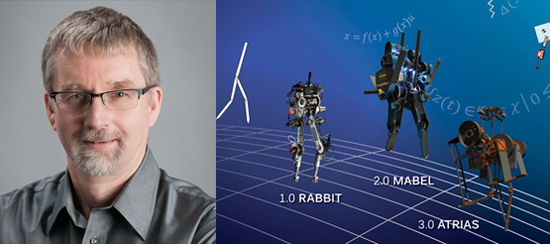Distinguished Lecture
Taking Bipedal Walking Robots from Science Fiction to Science Fact

In Science Fiction, robots walk, run, and jump better than you. In reality, can you count on them to walk over rubble and pull you from a burning building? Not so much. This talk will show how the science of feedback systems is enhancing the ability to achieve highly dynamic locomotion in bipedal machines. The theory used in the talk will be amply illustrated with graphics and videos of our experiments to make the material accessible to a general audience. As an example, the lecture will use the kinetic sculpture of Theo Jansen to explain something called a "virtual constraint".
Professor Grizzle's primary research interests lie in theoretical nonlinear control, with a firm commitment to demonstrating the power of theoretical results in practical applications. He jointly holds sixteen patents dealing with emissions reduction in passenger vehicles through improved control system design. Professor Grizzle's robotics work has been featured in The Economist, CNN, Animal Planet, Scientific American, Popular Mechanics, and many other news outlets.
Prof. Grizzle is a gifted and popular teacher, receiving the HKN Professor of the Year award just last year. He is the recipient of many professional honors, including the IEEE Control Systems Technology Award, the George S Axelby Outstanding Paper Award, the Ford Innovation Prize, and the IEEE Control Systems Society Bode Prize. He was also named a Scientific American Top 50 Technologist and received a Popular Mechanics' Breakthrough award.
Jessy W. Grizzle received the Ph.D. in electrical engineering from The University of Texas at Austin in 1983 and in 1984 held an NSF-NATO Postdoctoral Fellowship in Science in Paris, France. Since September 1987, he has been with The University of Michigan, Ann Arbor, where he is a Professor of Electrical Engineering and Computer Science, the Elmer Gilbert Distinguished University Professor, and the Jerry and Carol Levin Professor of Engineering.
 MENU
MENU 
